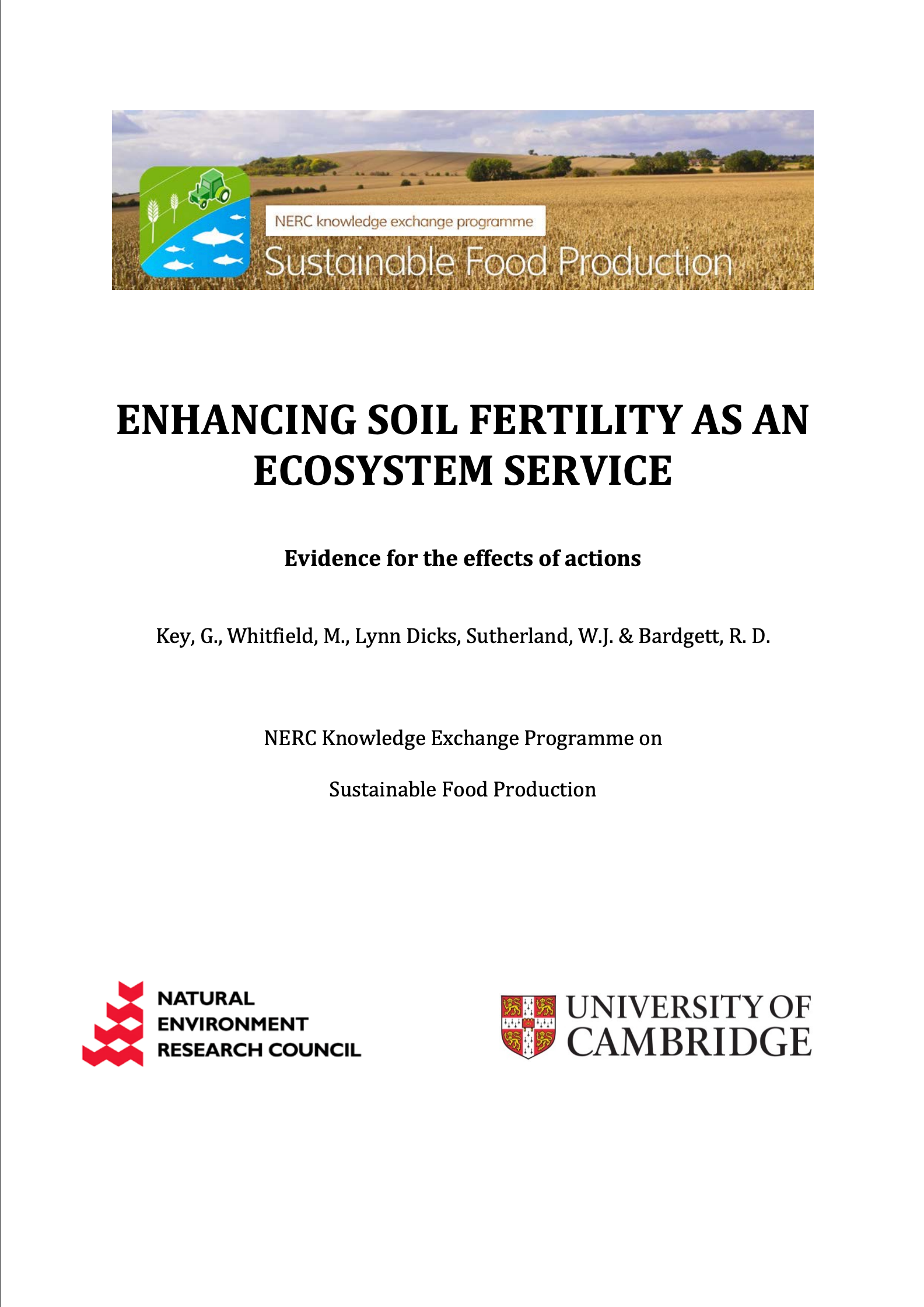Plant new hedges
-
Overall effectiveness category Trade-off between benefit and harms
-
Number of studies: 5
View assessment score
Hide assessment score
How is the evidence assessed?
-
Effectiveness
49% -
Certainty
45% -
Harms
20%
Study locations
Supporting evidence from individual studies
A 1997 review of case studies in sub-Saharan Africa, gathered from published literature (Kang, 1997) reported that woody species in alley cropping systems can improve nutrient recycling, reduce soil nutrient loss, encourage soil animal activity, control erosion, improve soil fertility and sustain levels of crop production. Legume species suitable for alley cropping include: gliricidia Gliricidia sepium, Leucaena Leucaena leucocephala, pigeon pea Cajanus cajan, calliandra Calliandra calothyrsus, mountain immortelle Erythrina poeppigiana, apa apa Flemingia macrophylla, and Christ thorn Dactyladenia barteri. In alley cropping multipurpose trees and shrubs and food crops are intercropped (two or more crops grown between the rows of another).
Study and other actions testedA controlled, randomized, replicated experiment in 1997-1999 on clay soil in Kenya (Anigma et al.2002) found that contour hedges conserved more soil on a 20% slope (168 Mg/ha) and 40% slope (146 Mg/ha) compared to plots with no hedges. Runoff was lower from 20% and 40% slopes (298 mm, 186 mm) compared to control plots (356 mm, 222 mm respectively). Less nitrogen and phosphorus was lost from the 20% slope than 40% slope with hedges, than without them. Calliandra Calliandra calthyrsus-Napier grass Pennisetum pupureum yield was 12 Mg/ha (20% slope) and 9 Mg/ha (40% slope), and used as animal fodder. Contour hedgerows containing calliandra and Napier grass were planted in 12 plots split between a 20% and 40% slope, and also control plots without hedges. There were three replicates. Maize Zea mays was grown on all plots. The study took soil samples from each plot and measured runoff, soil loss, nitrogen, phosphorus and yield.
Study and other actions testedA randomized, controlled, replicated experiment in 2001-2003 on clay soil in Kenya (Mutegi et al. 2008) found less soil was lost from slopes with Napier grass Pennisetum purpureum barriers (14.9 t/ha) than with combination tree/Napier hedges (calliandra 19.2 and leucaena 16.2 t/ha), tree hedges alone (calliandra 25.3, leucaena 27.8 t/ha), or control plots (61.9 t/ha). Inorganic nitrogen was higher in tree hedge plots (33.1 and 30.8 (NH4 + NO3) kg/ha) compared to Napier barrier or control plots. Tree and combination hedges had higher maize Zea mays yield (2.6-2.9 t/ha) than Napier (1.5 t/ha) and control plots (2.2 t/ha). On 33 farms, hedges/barriers of calliandra Calliandra calothyrsus (tree), leucaena Leucaene trichandra (tree) or Napier grass, and combinations of the tree species with Napier grass were established, on slopes exceeding 5%. Control plots had no hedges. Plots were 10 m long stretches of hedge. Soils were sampled 20 months into the experiment; soil fertility and loss, and maize Zea mays crop yield were measured.
Study and other actions testedA replicated study in 1996 on alluvial soils near to the Ondava River, Slovakia (Ľuptáčik et al. 2012) showed that soil conditions close to or beneath uncultivated field margins (willow Salix alba hedgerows) can be beneficial for oribatid mite (mites which live in the topsoil) diversity. Sampling was carried out along a transect incorporating a range of habitats (see below) over 212 m, in a corn Zea mays field. The willow hedgerow was found to have greater diversity than the other four sampled transect sites. At each site, eight soil samples were collected from random locations within a 9 m2 plot, at 12 weekly intervals. The sampling sites along the transect were: willow hedgerow, corn field, depression in field, followed by two more sites located further into the corn field.
Study and other actions testedA controlled, replicated experiment in 2011 on a sandy loam in Thailand (Donjadee & Tingsanchali 2013), found that vetiver Vetiver nemoralis hedgesreduce runoff volume by 31-69% and soil loss by 62-86% compared to the control without hedges. Vetiver hedges (vetiver grass barrier planted along contours) were planted on three slope gradients (30, 40 and 50%). There were four plots on each slope, 2 x 6.71 m in size. One plot on each slope was a control without hedges. An artificial rainfall system was used to test rainfall erosion, applying rainfall intensities of: 35, 60, 85, 110, 135, and 160 mm/h. There were three replicates. Runoff and soil loss were measured.
Study and other actions tested
Where has this evidence come from?
List of journals searched by synopsis
All the journals searched for all synopses
This Action forms part of the Action Synopsis:
Soil Fertility
Soil Fertility - Published 2013
Soils Synopsis





)_2023.JPG)














